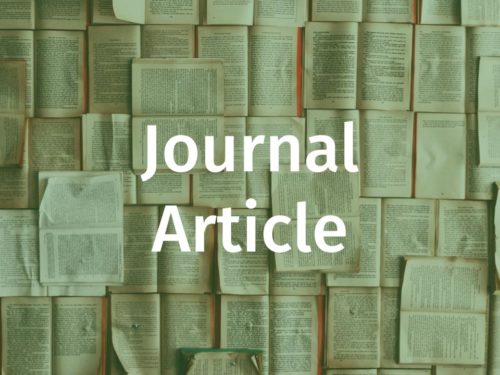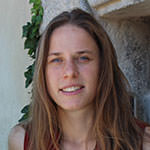Peace cannot be kept by force; it can only be achieved by understanding. – Albert Einstein
My personal interest with the situation in Palestine began first when I was an Erasmus student at the Oslo University College, in 2009, where I met an Israeli gentleman, as well as a Palestinian gentleman who both had very strong opinions about the situation.
The Palestinian gentleman, who was currently teaching at the Oslo University College, had been exiled from Palestine by the Israeli occupying force, and was therefore unable to return to Gaza, his hometown in Palestine. He, the Palestine lecturer, also mentioned that in Gaza most Palestinian children were now going to United Nations schools, and that the children were oppressed by the Israeli army. To substantiate this, he showed me a newspaper article depicting a Palestinian boy used a human child by Israeli soldiers, with the title: “The day Israel used a boy aged 13 as a human shield” (Source: Daily Mail, Friday 23rd April, 2004)
In conjunction I interviewed briefly an international student from Israel, by the name of Tal, who of course defended his country, by saying that Palestinian Terrorists have been killing the Israeli People for such a long time, and that they were living in daily fear (especially his girlfriend) of bomb attacks, and that therefore the Israeli occupation in Palestine was justified; (according to the interviewed subject, Tal Iron) but he did agree, that the children in Palestine were innocent victims of the war. However, when I asked him, whether the Israeli Army should withdraw from the Palestinian States, he replied, that it was not possible, saying that the occupation of Palestinian States was the only option for Israel at the moment to defend the Israeli People.
After having listened to both sides of the story, I visited Israel and Palestine myself in 2010, to form my own opinion on the matter about the ‘situation’ in the Promised Land.
In retrospect, I can say that I observed a lot of hatred and unforgiveness from both Israelis and Palestinians. I think the main problem is that the Palestinians and Israelis don’t see each other as human beings anymore, only as “things” of a political problem – hence the lack of empathy from both sides. There is also that bizarre biblical aspect from the Israelis connected to that region. And, similarly, from the Palestinians, the connection from phrases of the Koran to that region – hence the fight over Jerusalem to this very day which the Israelis jealously guard, refusing to let the majority of the Palestinian people enter. The Palestinians of course, think that Jerusalem is their divine inheritance; many Muslim fundamentalist leaders believing that Jerusalem must be regained from the Jews at all costs.
A good start may actually be to take the variable ‘Jerusalem’ out of the equation. Sometimes it is the best to ‘destroy’ the old, and create something new. By that I do not mean that the city of Jerusalem should be burned to the ground (although some people have also suggested that this may be a good start); but rather a transformation of Jerusalem on the metaphysical level. Basically, this would mean changing the name of the city, to transform and revitalize the energy in the region. The name ‘Jerusalem’ brings too many negative connotations with it. A new name to the city, to symbolize a positive change might just be what is needed to break the deadlock in the region.
Let us also look at the common spiritual interests which both warring nations have. One common spiritual philosophy which both the Israelis and Palestinians have is monotheism. So with Gods help – as both Israelis and Palestinians believe in the ‘One True God’ – the conflict in this region may be resolved yet. Of course, positive action will also be required by both parties. As the saying goes, ‘God helps those who help themselves’; but that does not mean that the Israelis and Palestinian should scratch each others eyes out : )
So there may be light at the end of the tunnel yet. Peace Activists are well aware that it is not only their duty to look for the Light, but also to bring Light when there is an absence of it.
Every person, regardless of what age, gender or social class can contribute in that. It may be in the form of a smile – as peace always starts with smile – or by giving and sharing, in all its various forms.
I myself, for example, gave an Israeli organization and the Al-Amari refugee camp in Ramallah a book of mine as a gift (“Cosmic Temple” – which is a book which also deals with war and reconciliation), and I also gave a couple of talks in Israel and Ramallah, arguing for the one-state solution for Palestine and Israel. I emphasized that if we South Africans managed to find peace, so can Palestine and Israel.
I also related – both to Israeli citizens and Palestinian citizens – my personal experiences of the first democratic votes in South Africa in 1994, where I also voted and participated, and that I experienced the positive transformation in that country.
I do agree with the Palestinian people, that Israel is the oppressor at the moment; but it is also my belief, that willingness for forgiveness and reconciliation has to come from both sides.
What is also worthwhile mentioning, is that since the traditional international diplomatic strategies have failed in that region (there are no embassies in Palestine), it is the youth of day – young activists like the ones I met at the camp in Ramallah (international activists, local Palestinian and even Israeli activists) – who have picked up the flag of liberty and are trying to bring peace. Where the older generation has failed, it is today’s youth who are amending the errors of their forefathers…
Anyway, when I returned to my university in Vienna, I talked about my experiences in Palestine and Israel with a Professor of mine. I also mentioned the fight over water resources between the Israelis and Palestinians, which are only very limited in that region (According to my observations in Israel and Palestine, this fight over water resources has caused major problems.) My professor’s opinion was that this is usually one of the main problems with warring ethnic groups; the lack of acknowledgment that the other side has the right to limited life-sustainable resources too.
This, of course, is very true – a prerequisite in any conflict resolution is that all parties must recognize that the needs and rights of the other are just as important as their own.
This brings us also to the high population density of the region. Israel has a population density of 341 people per square kilometer. The Palestinian Territories have a population density of 654 people per square kilometer. Compared, for example, to the USA which has a population density of 38 people per square kilometer, and France which has a population density of 116 people per square kilometer, the region of Israel and Palestine has an extremely high population density. (Not to mention the Gaza Strip, which has a population density of 4000 people per square kilometer!)
So perhaps peace between Israel and Palestine is actually impossible, because there are simply too many people in the region.
Perhaps, but perhaps not; because there are some very profound cosmic lessons that one can learn from living in a tight-knit society. Indeed, to live in harmony with your fellow man in an environment where the population density is extremely high – like in most western metropolitan cities – can actually be a very rewarding experience. After all, you can have only a limited number of enemies; but friends you can have an unlimited number, regardless how close they live together with you!
However, it is true that the geo-political dynamics in the Middle-East conflict are for more complex than in Europe. Nevertheless, I honestly believe that there has been made some progress in present day Palestine and Israel, if one looks at the history of this war-torn region. Because if the conflict between the Palestinians and the Israelis would have taken place two thousand years, the law of the jungle would have still prevailed, and the “unlucky” party that was conquered by the other party, would have been simply vanquished by the winning side. But this is not the case. No genocides have taken place, and the majority of the people in Israel and Palestine want a peaceful solution. So it seems there has taken place some kind of spiritual evolution of the people living in the region today, compared to the people who lived there two thousand years ago, where the constant ethnic conflict in the region was only ever resolved by violence and forced displacement.
Actually, it is a miracle that the Middle East conflict has so far been contained in this small region of Palestine and Israel. After all, the Islamic-Christian-Jewish conflict exists all over the world. Palestine and Israel may be a hotspot, symbolizing religious and ethnic conflict in all facets and colors. Indeed, the function of the region may actually be to carry the burden of ethnic and religious disharmony in our world, and to act as a warning example – as a cautionary tale – what can happen if we are not willing to learn to live with each other in peace. Because regardless of what race or creed we may be, we should always give Peace a chance!










